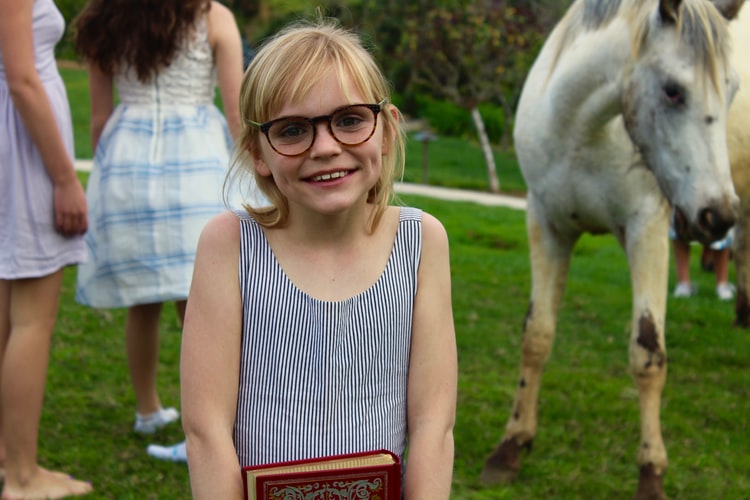
Having myopia (or being near-sighted) can be challenging for many children to deal with. For example, the condition could cause struggles in school — the teacher’s board work may be hard to read or it may be hard to join in most playground games.
Wearing glasses is one potential treatment. However, glasses are easily lost or broken and are disliked by many children who feel too self-conscious or uncomfortable. It may also be difficult to take part in sports for children with myopia. Glasses are not ideal for active children.
Having myopia can lead young ones to feel quite down. They can find it difficult to reach their potential at school or find interests they can enjoy in their spare time.
What can parents do to help a child with myopia live a full, active and happy life?
One potential treatment favored by many parents is orthokeratology, or the fitting of Ortho-K lenses, as they are often called.
What Is Orthokeratology?
Orthokeratology is a non-surgical treatment for improving vision. It involves wearing specially designed lenses overnight (and nothing during the day). These lenses gently and temporarily reshape the eye’s curvature long enough to allow good vision at all distances the next day.
The lenses need to be worn each night as effects are not permanent. However, patients find the lenses are perfectly comfortable and do not affect the quality of their sleep. Each pair should last around a year before replacements are needed.
What Are the Benefits of Ortho-K for Children?
● It can slow down the progression of myopia.
Research is ongoing in this area, but there have already been many indications that can make a significant difference in the long-term prognosis for young myopia sufferers. Myopia is a common condition and it is thought that, in some countries, as many as 80% of adults suffer from it.
It is important, wherever possible, to slow down the progression of myopia. All parents would want their child to avoid deteriorating eyesight and the need for progressively stronger prescriptions. Aside from this, however, many researchers have linked myopia at a young age with increased risks of serious eye problems later in life, such as retinal detachment.
The good news is that orthokeratology can help reduce these risks. A two-year study of children in Hong Kong, published in 2012, compared children treated with Ortho-K lenses and single vision glasses. It was found that the progression of myopia was significantly slower in the Ortho-K lenses group, particularly for the youngest children. This research mirrors the findings of researchers in Spain, Japan, Taiwan and several other nations.
As a result, clinicians are regularly using orthokeratology to control myopia.
● Children would not need to wear anything for their eyes during the day.
In almost all cases, orthokeratology will remove the need for any additional daytime prescription, such as glasses or contact lenses.
For many parents and their children, this comes as a huge relief. No more struggling to see the board at school. No more lost or broken glasses. No more feeling self-conscious and awkward.
Your child will experience clear vision and will be free to enjoy their school day, take part in all sports and activities, and to live their life fully.
● Orthokeratology is low-risk and non-surgical.
Understandably, many parents would want their children to avoid surgical procedures as much as possible. Orthokeratology is painless and non-invasive and is thus a popular alternative among parents.
Your child would attend a clinic for an eye examination and corneal mapping before returning for a lens-fitting appointment where you would be taught how to use the lenses correctly and safely. There would be regular appointments to check progress after this.
All treatments come with a degree of risk, but with orthokeratology, the risks are low. The most significant risk is of infection. However, as long as children are well supervised or assisted when handling their lenses and good hygiene is practiced, the chances of infection are small. There is also a small chance of experiencing glare, although this is possible with other treatments for myopia as well.
It is worth remembering that orthokeratology is also completely reversible. If your child does not enjoy wearing the lenses overnight or if unwanted adverse symptoms are experienced, the patient can simply stop wearing them and their eyes will return to normal very quickly.
Are Ortho-K lenses Suitable for My Child?
Ortho-K lenses are particularly suitable for children with mild to moderate myopia (-0.75 to -5.00D) or with mild hyperopia or farsightedness, up to +3.00D. A specialist at a reputable ophthalmology clinic will be able to confirm suitability.
They will also be especially appropriate for children who are particularly sporty or active and those who dislike wearing glasses, or lose or break them frequently. Parents who would like their child to avoid surgery should also seriously consider orthokeratology as an option.
With appropriate adult supervision, most children should be able to use Ortho-K lenses. As you might expect, they may take a little getting used to at first.
The Impact Orthokeratology Can Have on Your Child’s Quality of Life
Orthokeratology can make a significant difference in your child’s quality of life in general. Their immediate enjoyment of day-to-day life should improve with the correction of their vision without the need for glasses or daytime lenses. However, the long-term benefits to their eye health are also significant, especially when balanced with the low-risk factor associated with this treatment.


It’s great that you pointed out how orthokeratology is painless and non-invasive and is thus a popular alternative among parents. My younger brother got myopia and it seems to be giving him a lot of problems. He definitely needs some treatment for it and orthokeratology might be the best option.